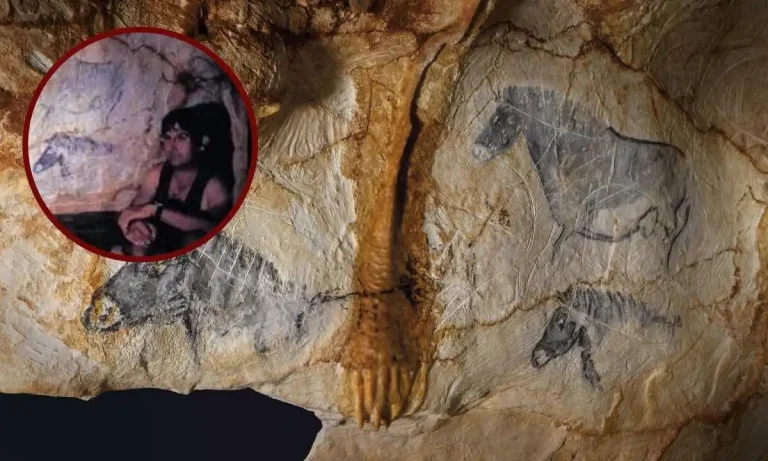Top 7 Weird Practices of the Victorian Era
The Victorian Era was significant in terms of science, beauty, culture, and customs. But there were some weird practices that seem rather far-fetched even today. This era, beginning from 1837 to 1901, marked significant societal changes in Britain. From consuming toxic substances to indulging in odd hobbies, these practices were downright bizarre. Let’s have a closer look.
1. Consuming Toxic Arsenic – Everyday Poison
Arsenic was more than a poison for the Victorian people; it was a popular beauty product and medicine. Wallpaper, beer, wine, sweets, wrapping paper, painted toys, sheep dip, insecticides, clothing, dead bodies, stuffed animals, hat ornaments, coal, and candles—all contained arsenic. Doctors deliberately prescribed arsenic as medicine. However, despite its popularity, it posed severe health risks.

Those who desired brilliant and permanent greens in their clothing, paints, and candy turned to such arsenical pigments as Scheele’s green. However, prolonged exposure caused symptoms such as vomiting, organ failure, and even death. And no one suspected that green dresses or green wallpaper might sicken and even kill until a doctor sounded the alarm in 1857
Victorians unknowingly ingested arsenic through contaminated food and water, as it was also used in dyes and pesticides. Its extensive use in paints, wallpapers, and even children’s toys left a legacy of toxic exposure. Despite scientific evidence highlighting its dangers, arsenic remained popular well into the era, making it one of the more dangerous trends Victorians followed.

2. People Got Really Into Taxidermy
The Victorians obsessed over preserving animals through taxidermy, often using them in home décor and art. They initially intended taxidermy to capture the appearance of wild animals and showcase them as trophies or symbols of status. However, they took it a step further, posing animals in human-like positions, sometimes even dressed in clothes—a practice known as “anthropomorphic taxidermy.” Fascinated by natural history, they created entire scenes where animals played out human activities such as tea parties, weddings, or music recitals.

This practice was not limited to the elite; taxidermy became a popular pastime among the middle class as well. Collections of preserved animals, from butterflies to larger animals like cats and dogs, filled Victorian homes and museums. Another important element of Victorian taxidermy was the use of glass domes to display the animals. These domes were often ornately decorated, and they were used to create a sense of drama and spectacle around the preserved animals. For Victorians, taxidermy was a way to appreciate nature’s beauty, albeit in an artificial and often eerie way.
3. Unsettling Photography of the Dead
Victorian families practiced post-mortem photography, capturing images of deceased loved ones as a way to preserve their memory. People called this practice “memento mori” photography. It involved dressing and posing the dead to appear as though they were still alive. They placed the deceased often in lifelike positions. Also, in some cases, family members posed alongside them, creating eerie yet sentimental family portraits. The death rate was high, especially among children, and many families lacked other photographs of their loved ones, making these post-mortem images precious keepsakes.

While strange by today’s standards, post-mortem photography was a form of remembrance and mourning in a time when death was more visible in everyday life. These photographs were sometimes kept in family albums, a lasting reminder of loved ones. Although unsettling, this custom reflects the Victorians’ complex relationship with death and remembrance.
4. Wearing Dead Birds on Their Heads
Victorian fashion included the macabre trend of wearing dead birds on hats, with feathers, wings, and even entire birds used as elaborate adornments. Bird hats were particularly popular in the late 1800s, often symbolizing wealth and social status. The trend threatened entire bird populations with over-hunting. In London alone, hunters killed over three-quarters of the 700 bird species on sale in millinery shops specifically for fashion, causing a dramatic impact on wildlife.

This obsession with bird has led to the formation of the Audubon Society, which aimed to protect bird species from extinction. While the fashion eventually died out, the effect on bird populations had lasting consequences, making it one of the most environmentally harmful Victorian trends.

5. Victorians Held Mummy Unwrapping Parties!
The Victorian fascination with ancient Egypt led to a peculiar social event: mummy unwrapping parties. Wealthy Victorians would purchase Egyptian mummies, often through dubious means, and invite guests to witness the unwrapping process in the name of science and spectacle. These events were both educational and morbidly entertaining, held in drawing rooms or lecture halls, where the wrapped remains were slowly unveiled before an eager audience. Many Victorians viewed this as an exotic form of entertainment and a way to showcase their interest in archaeology.

While the practice provided insights into ancient Egyptian culture, it was also deeply disrespectful to the individuals being unwrapped. The remains often suffered damage during these events, highlighting the disregard for preservation and respect in favor of entertainment.
6. Gross Tapeworm Diet
In pursuit of the ideal figure, some Victorian women turned to a bizarre weight-loss method: swallowing tapeworm pills. The idea was that a live tapeworm would consume part of the host’s food intake, helping them lose weight without altering their diet. Advertised as a simple solution to weight gain, these pills were marketed as safe and effective, ignoring the severe health consequences of hosting a parasite. Tapeworm infestations caused a range of health issues, including malnutrition, abdominal pain, and, in severe cases, death.

Although the trend was short-lived due to its dangerous effects, the tapeworm diet left a haunting legacy as one of the most extreme beauty practices of the Victorian era. It serves as a reminder of the lengths people went to achieve societal beauty standards, often at the expense of their health.
7. Crazy About Ferns!
Ferns became a Victorian obsession in what is known as “Pteridomania” or “fern fever,” where people collected and cultivated ferns as a fashionable hobby. Fern collecting became popular among the upper and middle classes, with people decorating their homes with elaborate fern displays. Some Victorians even wore fern motifs on their clothing and accessories. Public parks and conservatories dedicated to ferns were established, where enthusiasts could gather and admire these plants.

The craze extended to books and botanical illustrations, which made ferns accessible and helped promote their beauty. Fern fever was relatively harmless compared to other Victorian fads, though it reveals the period’s fascination with nature and exoticism. For many, fern collecting was an escape from industrialization, offering a way to reconnect with the natural world amid rapid societal change.
Conclusion
The Victorian Era, marked by innovation and curiosity, also gave rise to several unusual and sometimes disturbing practices. These customs, from wearing dead birds on hats to photographing the deceased, reflect a society fascinated by the macabre, beauty, and nature. Each of these seven practices showcases the complex and often contradictory values of the time, where scientific exploration, beauty ideals, and societal norms intersected in unexpected ways. Looking back on these trends reminds us how societal standards and pursuits of beauty and status can drive people to extremes.
Also Read
The World’s First Electric Highways To Charge EVs While Driving
This Arkansas Diamond Mine Is Open For the Public To Look For Diamonds And Keep What You Find!







